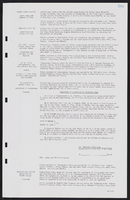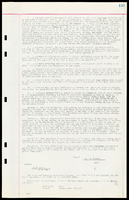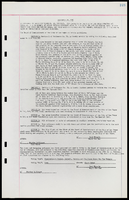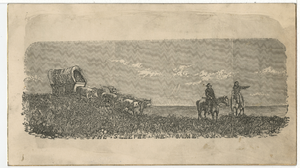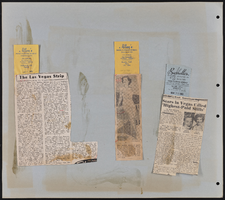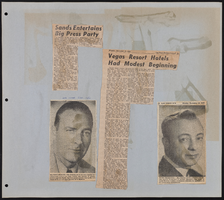Search the Special Collections and Archives Portal
Search Results

Thirty-Five years of Western progress of aircraft: poster
Date
1926 to 1961
Archival Collection
Description
From the UNLV Libraries Single Item Accession Photograph Collection (PH-00171). From biplane to fanjet, 22 aircraft types have carried the colors of Western Airlines, America's Pioneer Airline. (Shows pictures of all of these aircraft types, with dates.) Douglas M-2 (1926). Shearman Model 4-D (1927). Fokker F-10 Trimator (1928). Lockheed Air Express (1928). Loening Amphibian (1930). Sikorsky S-38 Amphibian (1930). Boeing Flying Boat (1930). Fokker F-32 (1930). Boeing Model 95 (1930). Boeing Model 40-8-4 (1930). Fokker Super-Universal (1932). Douglas DC-2 (1934). General Aviation Model 43 (1934). Boeing 247D (1935). Douglas DC-3 (1937). Lockheed Lodestar (1942). Douglas DC-4 (1945). Nirth American AT-6 (1945). Convair 240 (1948). Douglas DC-6B (1952). Lockheed Electra (1959). Boeing 707 (1960). Boeing 720B Fanject (1961).
Image
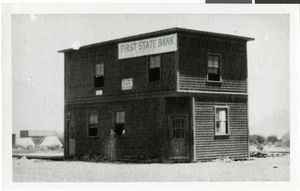
Photograph of First State Bank, Las Vegas, 1905
Date
1905
Archival Collection
Description
First State Bank, Las Vegas, 1905. Handwritten text on back of photo: "First State Bank - 1905 First & Fremont Street - Occupied same site as present Bank Building -- [in 1963 occupied by The Mint Club] Rooms upstairs were occupied by Masonic Lodge. This old building was later removed to an alley location just north of VonTobel's Lumber Yard." The insert that accompanies photo reads: "The history of Las Vegas and Southern Nevada might be well written around the history of the Las Vegas branch of the First National Bank of Nevada, a statewide banking system. For this branch has been an integral part of the growth of Las Vegas - sharing its hardships and its prosperity. Established as the First State Bank by a group of public spirited pioneers in 1905, the Bank, through the practice of sound banking policies has grown, until today it is symbolic of the strength of 'the One Sound State.'"
Image
Hirsch, Charles J., 1912-2002
Accountant Charles J. Hirsch was born in New York City, New York on November 8, 1912. After graduating from New York's Pace University in 1938, with a degree in Accounting and Business Administration, he traveled to Las Vegas, Nevada, where he was employed by the Apache Hotel on Fremont Street. His stay in Las Vegas was interrupted once by a five-year tour of duty with the Air Force Contract Audit Division, where he attained the rank of captain before his release in 1946.
Person

Transcript of interview with Herb Jeffries by Cork Procter, May 5, 2009
Date
2004-05-05
Archival Collection
Description
Herb Jeffries, a renaissance man, loved life and lived it well. A consummate professional, Jeffries excelled as a singer, actor, businessman, and lover of the finer things in life. He appreciated good literature, art, culturally-diverse food selections, freedom, and worthwhile conversation. The pioneering black singing cowboy, was born Umberto Valentino in Detroit, Michigan on September 24, 1913. His career as an entertainer began as a teenager in Chicago, singing with Earl “Fatha” Hines. Next came the movie career and then back to the stage in 1939 with the Duke Ellington Orchestra. By the early 1950s, he had moved to France and opened a popular jazz club in Paris and another in southern France. According to this interview, these clubs drew “beautiful people” from all over the world. Jeffries’ career moved from performances in the American South restricted to tobacco warehouse and black-only movies theatres to starring in numerous movies leading ultimately to a star on the Hollywood Walk of Fame. The most famous of his five wives was Tempest Storm the burlesque star and motion picture actress. Herb Jeffries made his transition, leaving behind his fifth wife, at 100 years of age on May 25, 2014.
Text
Pagination
Refine my results
Content Type
Creator or Contributor
Subject
Archival Collection
Digital Project
Resource Type
Year
Material Type
Place
Language
Records Classification

